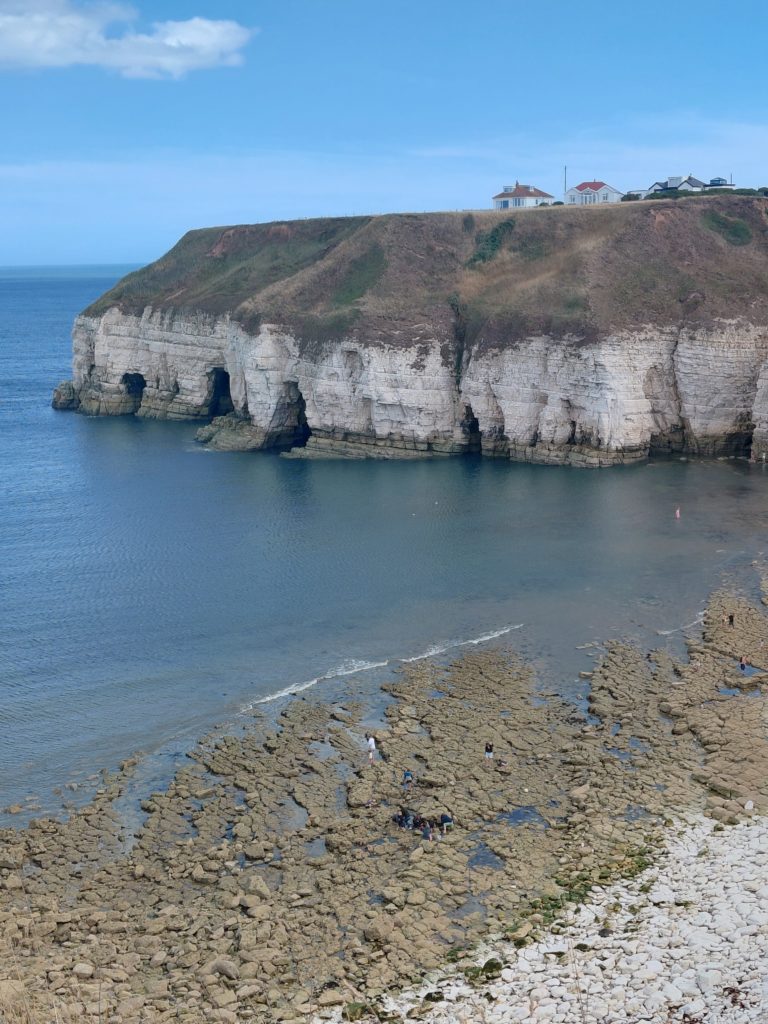
The photo above was taken looking south-east from above Thornwick Bay on the north side of Flamborough Head. It shows the chalk cliffs and caves on the south side of the Bay and the thick overburden of boulder clay deposited by the retreating ice sheets of the Devensian (last) ice age. The lower chalk strata inland was similarly covered with boulder clay (originally the top soil of Doggerland s.p.b.), this thinning higher up the side of the escarpment. Previous inter-glacials would have seen Doggerland home to many mammals, including Neanderthals and Homo Sapiens.
Over the decades every now and then the national news celebrates the discovery of some fragments of ancient bones that prove the existence of an intermediary species of hominid (or homines) that were links in the evolutionary chain between ancestors that walked on four limbs and homo sapiens (or us). initially heralded as ‘missing links’, further discoveries have unearthed a series of missing links over the last c.2 million years, most of whom eventually spread ‘out of Africa’. Neanderthals, however, are thought to have evolved in Eurasia (Northern Hemisphere) and were better able to withstand extreme cold. Neanderthals (named after an area in Germany) were nomadic hunter-gatherers who evolved quite sophisticated flint chipped hand tools between about 250,000 and 130,000 years ago. Remains studied by modern technology suggest that they were quite short, by comparison, but physically very strong and with a skull protecting a larger brain than average modern humans. They had evolved to group living, rather than solitary creatures, and must have developed some form of communication.
With Britain not being an island sometimes in those far-off days Neanderthal groups would have criss-crossed Doggerland, although wide rivers (s.p.b.s) must have been barriers to progress.
All this on the back of Charles Darwin’s revelation of the force of evolution in animal development as first shared with society in the 1860s.
It seems clear that there was some social interaction between Neanderthals and early Homo Sapiens as vestiges of Neanderthal physical characteristics some up in some people’s DNA today.
(An example to follow next time).